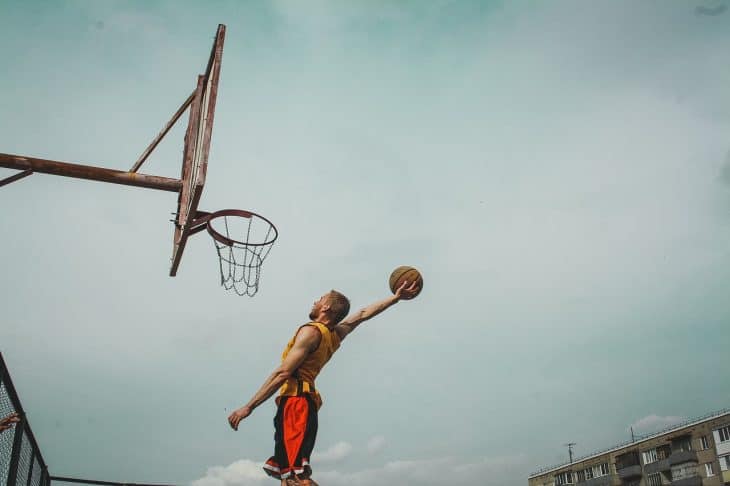
Today, basketball has one of the biggest subcultures of any sport. Whether you’re a fan or a player yourself, basketball has come a long way from its humble beginnings as a simple winter activity. There’s no denying basketball’s impact on our lives, as some of the world’s biggest brands such as Nike built its legacy on basketball. However, there are still many things people don’t know about it. Get your head in the game and take a closer look at one of the most popular sports with these basketball facts.
- Basketball season starts late October and ends mid-April of the following year.
- Regular season games have 30 teams playing 1189 games in total.
- Each team plays 82 games; half at home court, and the other half away.
- The standard basketball court is 94 ft long and 50 ft wide.
- Since 1891, the standard basketball hoop stands 10 ft tall.
- Basketball is a game played between 2 teams of 5 players whether indoors or outdoors.
- In 1976, women’s basketball became an Olympic sport.
- Women’s professional basketball holds games in the summer months.
- Robert Parish holds the record of having the most games played at 1,611.
- Kareem Abdul-Jabbar has the most points scored at 38,387.
- The Sacramento Kings, founded in 1923, are NBA’s oldest franchise.
- The most-attended basketball game ever was the NBA All-Star Game at Cowboys Stadium with 108,713 total attendees.
- All the NBA uniforms are manufactured by multinational sportswear manufacturer Adidas.
- Since 1984, Spalding has been the official manufacturer of NBA basketballs.
- All NBA courts consist of maple wood floors as the strong yet flexible material helps players jump and land safely.
- Basketball is the only major sport that originated strictly from the U.S.
- At just 18.5 years old, Kobe Bryant was the youngest NBA player of all time.
- Team USA holds the most basketball Olympic gold medals won by the men’s team with 15 medals from the Rio 2016 Olympics.
- At the same event, Team USA also grabbed the most basketball Olympic gold medals won by the women’s team at 8.
- A warm basketball is bouncier than a cold one.
Basketball Facts Infographics

Canadian-American James Naismith invented basketball.
In 1891, physical education instructor James Naismith created basketball to provide an indoor sport that athletes could play in the winter. Originally, he also introduced basketball as a less injury-prone activity than football.
Throughout the 20th century, the sport gradually gained popularity beyond the International Young Men’s Christian Association (YMCA) Training School. Soon enough, basketball became the global craze that we came to know today.
Basketball borrows its name from peach baskets.
The name of the sport originated from its very first game where Naismith used two half-bushel peach baskets as goals. While there was a lot of running and shooting, there was only one score in the game shot by William R. Chase midcourt.
Some basketball rules came from a children’s game called “Duck on a Rock.”
In this game, a stone is placed on any elevated objects like a tree stump. One player guards it while the other players try to knock the stone off by throwing rocks called “ducks.” This shares similarities with basketball’s offense and defense elements.
People did not have a copy of the rules until January 15, 1892.
The newly invented game soon had word spread out and compelled associations to write Naismith for a copy. Eventually, Naismith officially released basketball’s rules in the January 1892 issue of the YMCA Training School’s campus publication Triangle.
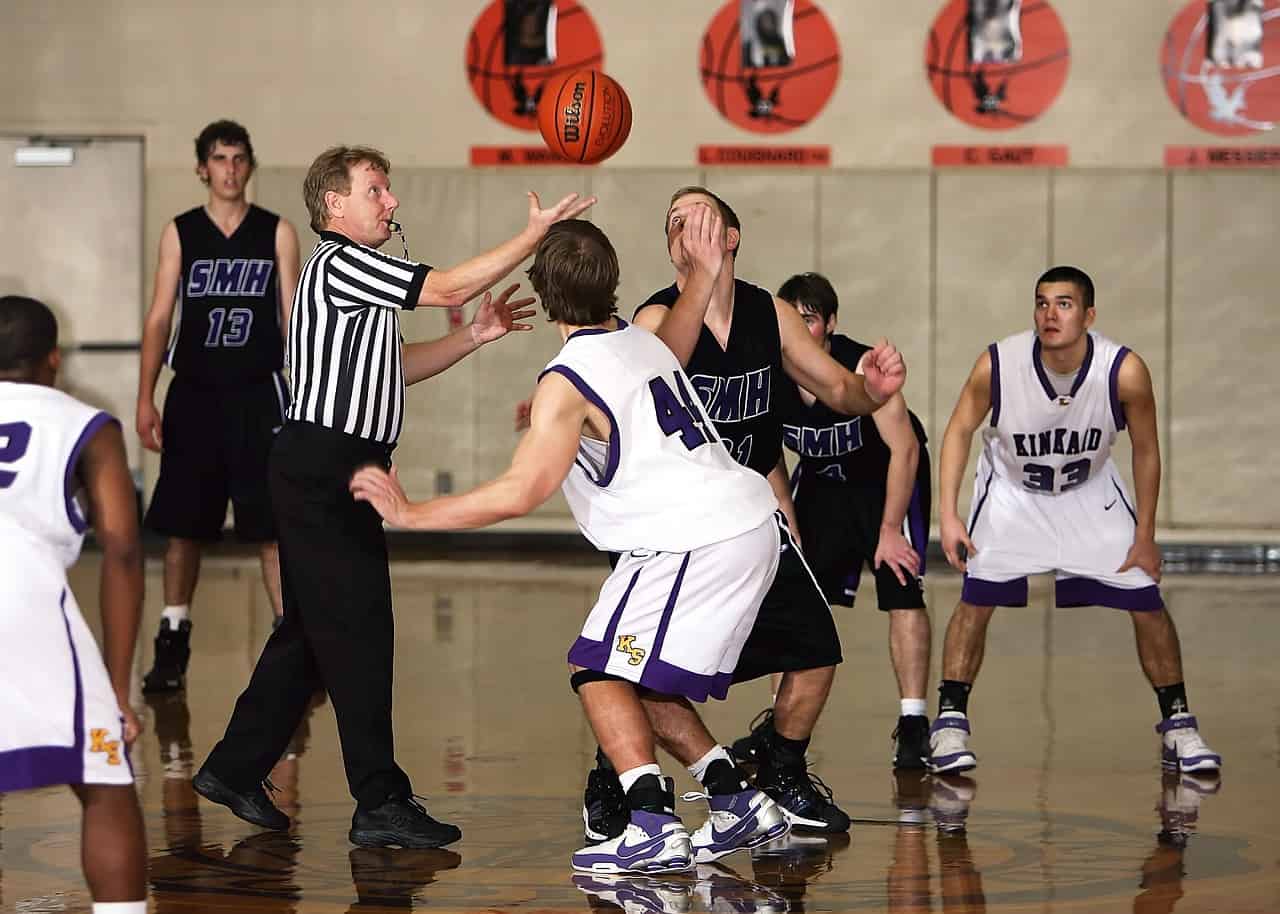
Canada was the first country to play basketball outside of the U.S.
In 1893, basketball was introduced in France. England soon followed in 1894 with Australia, China, and India. Soon, basketball reached Japan in 1900.
Basketball helped boost the membership of YMCAs.
In basketball’s early days, basketball courts weren’t universally available yet. As a result, many joined the YMCA for the institution’s gyms. However, various associations outlawed the game within five years as players ended up monopolizing gyms.
Many members terminated their YMCA memberships when basketball got outlawed.
While the leaving members were a loss, it still eventually worked in basketball’s favor. The movement compelled associations to start hiring halls for games. Hence, it launched the professionalization of the sport.
Television greatly influenced the growth of college basketball.
From 1963, the NCAA championship games were televised nationally. By the 1980s, all three major television networks in the country were telecasting intersectional college games during the season from November to March.
With basketball on TV, 4 areas of the game developed.
When basketball started being televised, it led to the development of the U.S. high school and college basketball, and women’s basketball. Eventually, the wider public interest for basketball also paved the way for professional and international basketball.
Coach Frank W. Keaney holds the credit for the concept of “fast break” in basketball.
From 1921 to 1948, Keaney worked as a basketball coach at the University of Rhode Island. The fast break refers to a strategy where the offensive team rushes the ball upcourt with the hopes of getting a good shot before the defense can be set.
Adolph Rupp introduced the concept of pressure defense in basketball.
This was yet another contribution to basketball’s fast-paced nature. In 1931, he became the coach for the University of Kentucky. There, he turned the institution’s program into one of basketball’s pioneering figures as a whole.
At the same time, defensive coaching philosophy underwent big changes through pioneer coaches.
Basketball’s defensive tactics developed from different institutions. Coach Henry Iba of Oklahoma A&M University and Coach Clair Bee of Long Island University pioneered man-to-man defensive strategies.
Meanwhile, Coach Cam Henderson of Marshall University in West Virginia developed the elements of zone defense. Later, these concepts became an integral part of basketball.
Clara Baer influenced women’s basketball when she accidentally made her own set of rules.
Clara Baer introduced basketball to the H. Sophie Newcomb College for Women in New Orleans. When Baer received a diagram of the court from Naismith, she misinterpreted the dotted lines. The lady coach thought of them as restraining lines instead of indicators of the areas in which players might best execute team play.
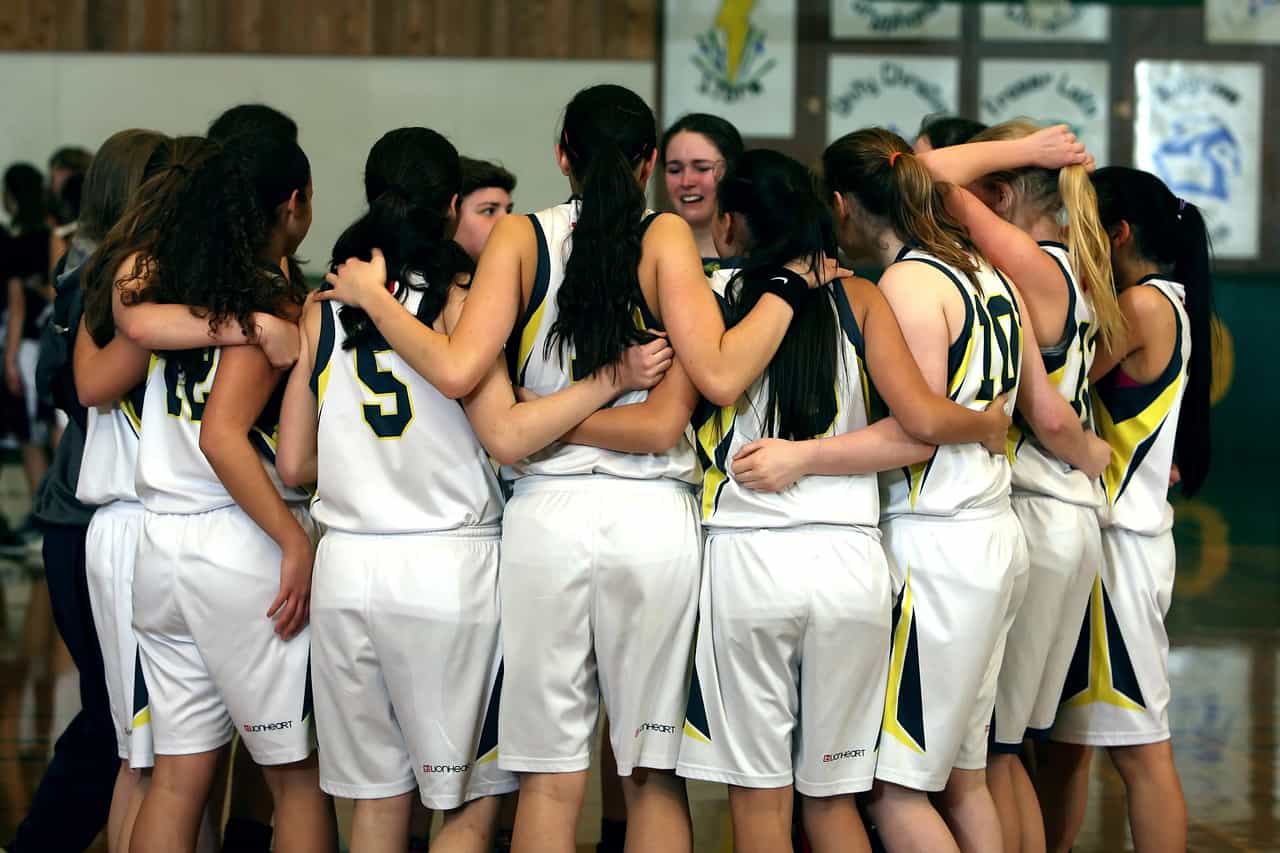
Forrest “Phog” C. Allen advanced the success of international basketball.
Being mentored by Naismith himself, Allen was a former coach at the University of Kansas. From 1936, he led the movement pushing for the inclusion of basketball in the Olympic Games.
FIBA governs international basketball games.
FIBA stands for Fédération Internationale de Basketball Amateur. While the world championships for men began in 1950, basketball world championships did not include women until 1953. In 2014, the men’s tournament earned the new name FIBA Basketball World Cup.
There is a Naismith Memorial Basketball Hall of Fame in Massachusetts.
However, it has a huge difference from baseball and football halls of fame. Unlike the other two, this establishment honors both American and international professionals.
The first college to play basketball was Geneva College in Beaver Falls, Pennsylvania.
In 1892, C.O. Bemis caught wind of the new sport at Springfield. He then went on and tried it out with his students at Geneva.
The first college basketball game with 5-player teams took place on January 18, 1896.
The first college basketball game between the University of Chicago and the University of Iowa took place in Iowa City. With neither team using a substitute, the University of Chicago won 15-12.
Hank Luisetti was the first to use the one-hand shot.
The Stanford University player then popularized the move in the late 1930s. Before that, the only outside attempts came from two-handed push shots.
Luisetti’s one-hander push-off evolved to a jump shot in the 1950s-60s.
On the other hand, this move has the ball released at the top of the jump. Jerry West of West Virginia University and Rick Mount of Purdue University first demonstrated the efficiency of this iconic basketball shot.
The Amateur Athletic Union staged the first basketball tournament in 1897.
The hailed winner was New York City’s 23rd Street YMCA. Later, the group became a traveling professional team known as the New York Wanderers.
The first national tournament for colleges did not happen until 1937.
An organization in Kansas City held the first national tournament for US collees in 1937. Eventually, the group became the National Association of Intercollegiate Athletics (NAIA).

The National Basketball League is the first professional basketball league.
Formed in 1898, NBL held games different from college basketball. A chicken-wire cage surrounds the typical NBL court as it separates players from fans who often get hostile. This birthed the long reference for basketball players as “cagers.”
The longest NBA basketball game lasted for 78 minutes.
The American teams Indianapolis Olympians and Rochester Royals hold the record for the longest basketball game ever played. The game took place in Edgerton Park Arena in Rochester, New York on January 6, 1951. In the 6-overtime game, the Olympians won 75-73.
The highest-scoring NBA game ended with a score of 186-184.
Played on December 13, 1983, the Detroit Pistons went against the Denver Nuggets in a triple-overtime game. With this feat, they hold the record for the highest-scoring NBA game of all time.
The record for the most NBA championships won goes to the Boston Celtics with 17 wins.
Among this record are 7 straight wins from 1960 to 1966. The Celtics’ other victorious years were 1957, 1959, 1968-69, 1974, 1976, 1981, 1984, 1986, and 2008.
The tallest basketball player recorded in history was 8.05 ft tall.
Suleiman `Ali Nashnush (1943-91) remains to hold the record for the tallest basketball player in history. Standing just a little over 8 feet, he played for the Libyan team in 1962.
Manute Bol is the tallest NBA player ever at 7 ft 7 in.
In 1985, Bol played for the Washington Bullets. He joined the Miami Heat in 1994. In his lifetime, Bol played a total of 624 games and has accumulated a total of 1,599 points. However, people often get confused with his nationality as he belongs to both Sudan and America.

Retired Romanian player Gheorghe Muresan also stood over 7 ft.
The two 7 ft 7 in-ers once played for the same team Washington Bullets in 1993. Later, Muresan concluded his career with the New Jersey Nets. His 7-year career spanned 307 games wherein he scored 3,020 points. Despite growing to this height due to a pituitary gland disorder, Muresan had quite a successful basketball career.
The shortest NBA player ever was only 5’3’ tall.
Tyron “Muggsy Bogues” Curtis earned his nickname due to his scrappy and aggressive defense.
Six-time NBA champion Michael Jordan hails as the richest basketball player ever.
As of February 2020, Jordan reportedly has a personal net worth of approximately $2.1 billion. Included in his career earnings are about $90 million in salary and over $1.4 billion from corporate partners. For one, his partnership with Nike birthed the Jordan Brand, a sub-segment of the apparel giant.
The record for the highest annual earnings for a basketball player goes to LeBron James.
Reports by July 2018 claimed that Jordan earned $85.5 million (£64.71 million) between July 2017 and July 2018.
Basketball fans hail Michael Jordan as the greatest basketball player of all time.
Still, there are other players for the same title in various categories. In terms of championship rings, Bill Russell holds the most wins. Wilt Chamberlain reigns on statistical dominance, while Kareem Abdul-Jabbar has the most remarkable longevity. Now, LeBron James is considered as a challenger to the coveted throne.
Chuck Cooper, Nat Clifton, and Earl Lloyd were the first African-American NBA players.
Lloyd made basketball history when he played for the Washington Capitals on October 31, 1950.
The first Chinese player to compete in the NBA was Wang Zhizhi.
In the 2000-2001 season, seven-footer center Wang Zhizhi played his first NBA game for the Dallas Mavericks. However, most people mistake Yao Ming to be the first one.
Wilt Chamberlain holds the record for the most points scored in a single basketball game.
Chamberlain achieved his 100-point record in a game against New York. Before going professional in the late 1950s, Chamberlain played at the University of Kansas. Today, he remains to be the greatest all-around big man to ever play.
Kareem Abdul-Jabbar had the most influence on basketball rules.
Abdul-Jabbar’s sophomore year at the University of California at Los Angeles led to the prohibition of dunk shots from collegiate basketball. It was one of the many instances where the committee felt that big players had too great of an advantage in the games.
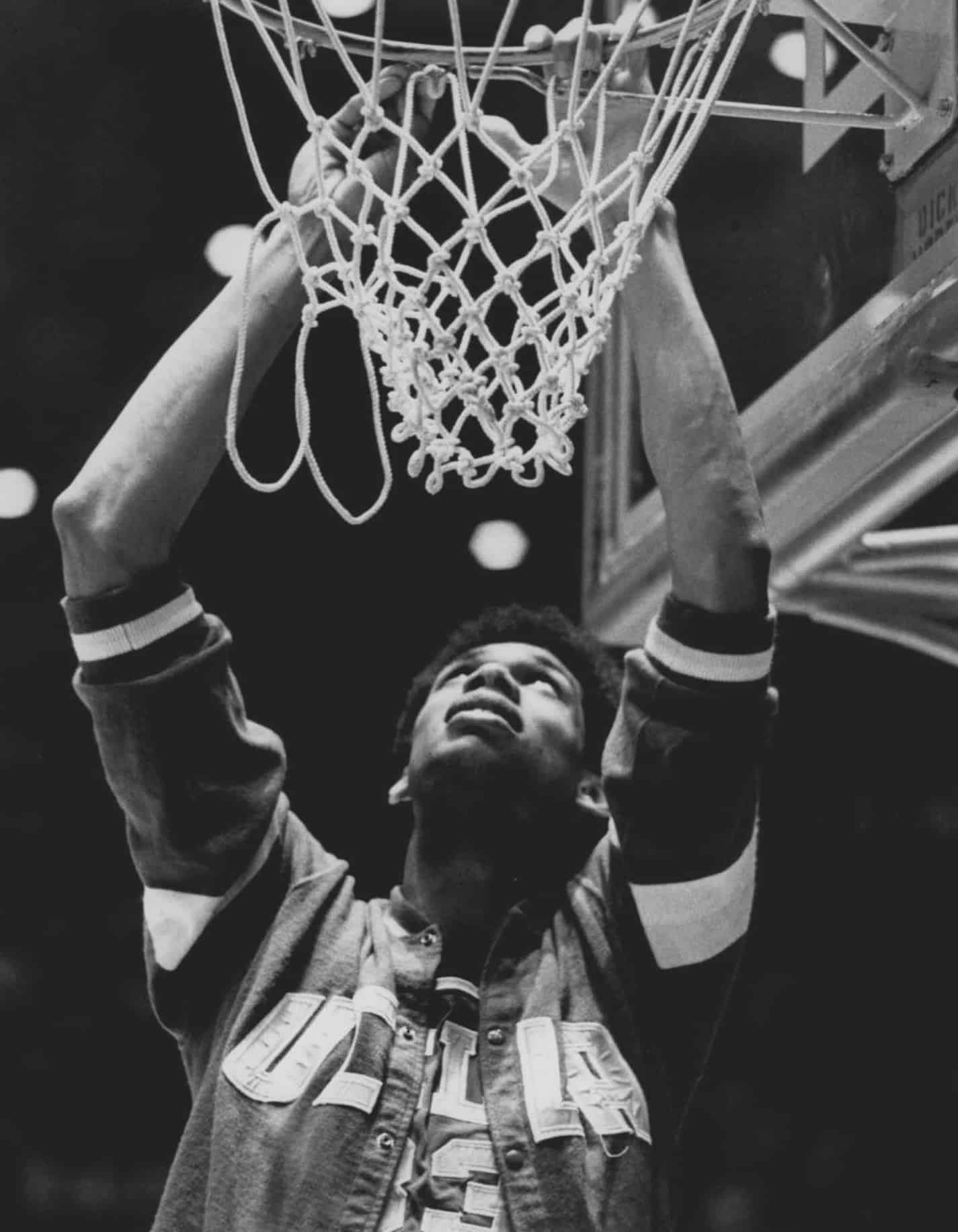
Brothers Edward and Lew Wachter were among the underrated players of early basketball.
Bill Hardman, Jack Inglis, and Jimmy Williamson share the same sentiment as they played for various towns. These players introduced the offensive bounce pass and long pass. They also championed the 1923 rule that lets each fouled player shoot his own free throw.
Corey “Thunder” Law holds the record for the longest successful basketball shot at 109 ft 9 in.
A Harlem Globetrotter player, Law went on to set other amazing basketball records. Among them are the longest basketball shot blindfolded at 69 ft 6 in and the farthest shot backward at 82 ft 2 in.
Ron Artest holds the record for the longest ever NBA suspension.
An Indiana Pacers member, Artest was suspended for 73 games and 13 playoff games. Aside from that, he even lost $7 million in salary. Definitely one of the more unfortunate basketball facts.
Latrell Sprewell comes in second with a 68-game suspension.
In 1997, he attacked and choked coach P.J. Carlesimo for about 15 seconds before the other players managed to pull him off.
The Original Celtics were the most widely-heralded professional team before WWII.
Formed in 1915, the group of youngsters from New York City kept adding players in the early 1920s. As a team, they became invincible until they disbanded in 1928. When they regrouped in the early 1930s, they played under the name New York Celtics.
The Celtics played every night, twice on Sundays, and mainly on the road. During the 1922-23 season, they bagged 204 out of 2015 games. Finally, they retired in 1936.
The New York Renaissance reigns as the strongest all-black team of all time.
Also known as the Rens, the team was organized by Robert Douglas in 1923. In the 1932-33 season, they won 88 consecutive games. Moreover, the Rens beat the Harlem Globetrotters and the Oshkosh All-Stars in the world championship pro tournament in Chicago.
In 1938, NYC basketball writers organized the first National Invitation Tournament (NIT).
Just a year later, the New York City colleges took control of the event. The NIT reigned as the most prestigious American tournament until the early 1950s. However, the growth of the NCAA championship downgraded the NIT to a consolation event for teams who failed to make the NCAA selections.
The first NCAA Tournament took place in 1939.
However, its growth underwent three different stages. For the first era in 1964, NCAA was merely a tournament for champions of various conferences. The 1939 field only hosted 8 teams which grew up to 25 by 1963. Moreover, these teams were all champions of their respective conferences with the addition of successful independent teams.
The most outstanding basketball teams competed in both the NCAA and NIT tournaments.
At least, that was the case in the 1940s to the 1950s. Gambling scandals ensued the 1950 NIT championship. Hence, committees prohibited a team from playing in both since then. The NCAA tournament outgrew the NIT progressively.
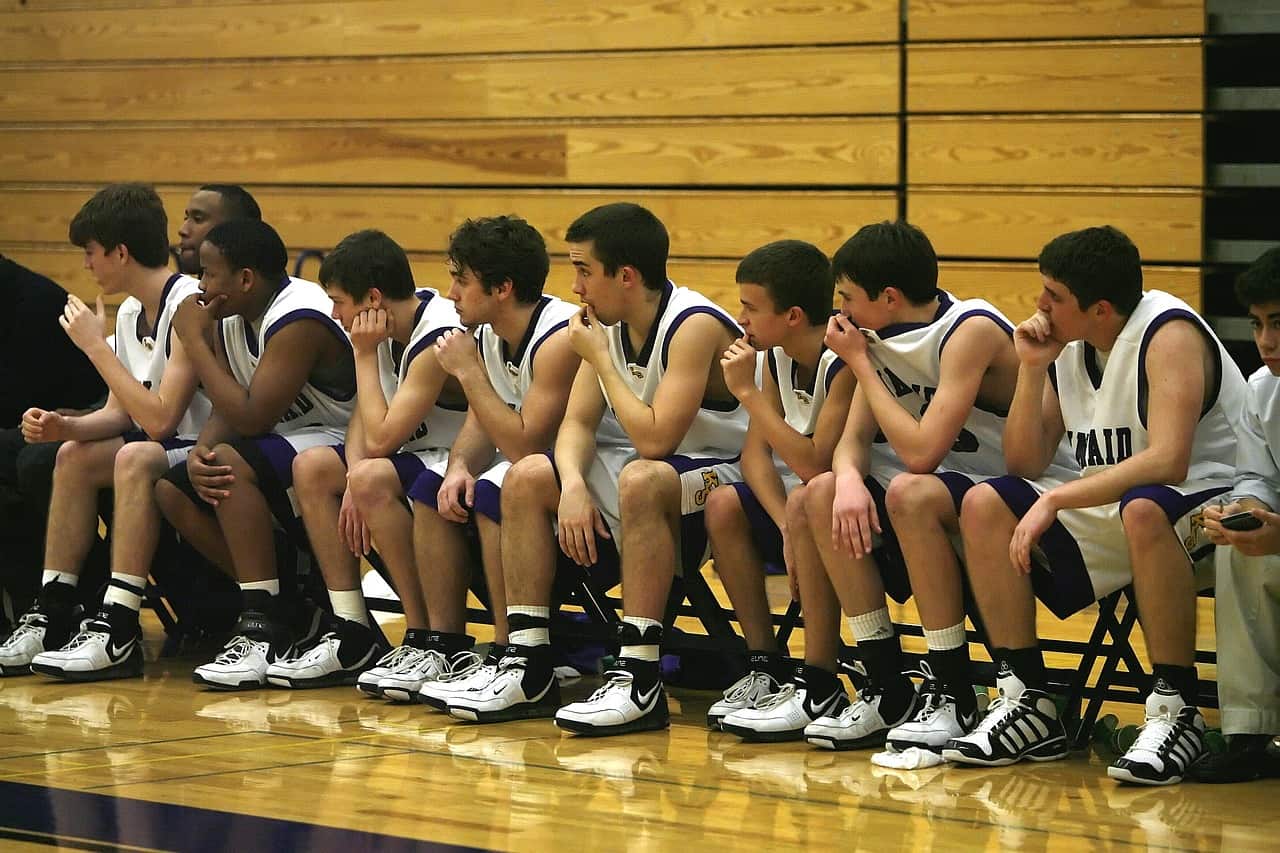
The 2nd era of NCAA dawned in 1964.
When John Wooden coached the UCLA Bruins, a period of NCAA field domination began. Coach Wooden successfully led his teams to 10 NCAA championships from that season to 1975.
The dynastic period of UCLA had a regressive effect on basketball's growth as a game.
With the same teams and faces competing, many spectators found that this predictability took away the game’s appeal. Texas Western University (now University of Texas at El Paso) won in 1966 and North Carolina State in 1974. However, those 2 years were the only championships that broke UCLA’s reign.
The end of the UCLA dominance signaled the 3rd era of NCAA.
All the other sections of the country were given a chance to introduce their own champions. With only 25 teams in 1974, NCAA expanded to 64 teams in 1865. It continued to 64 in 2001, then 68 in 2011. Not only did the event include conference champions but it also gathered outstanding teams from the same conferences as well.
The Middle Atlantic and New England states developed the professional games first.
The first great professional clubs consisted of Trenton (New Jersey) and the New York Wanderers. Then, the Buffalo (New York) Germans followed suit. In 1895, the group started out as 14-year-old members of the Buffalo YMCA. It garnered occasional new members as the group continued for 44 years, bagging 792 games out of 878.
The Great Depression of the 1930s negatively affected professional basketball.
In 1937, a new NBL was organized in and around the upper Midwest. Walter A. Brown, president of the Boston Garden, organized the new Basketball Association of America (BAA). As it formed in 1946, the movement led professional basketball to assume major league status.
In 1949, the BAA and the NBL merged into the National Basketball Association (NBA).
These basketball facts finally ended a costly two-year feud. Further, the NBA established an annual college draft. As the NBA permitted each club to select a college senior in inverse order, it helped equalize the strength of the teams.
Since the early 1980s, the NCAA has control over the women's college game.
It shifted from the Association for Intercollegiate Athletics for Women (AIAW). Aside from adding visibility to the category, this move also streamlined the operation.
In 1978, the Women’s Professional Basketball League (WPBL) began.
Unfortunately, the organization only lasted three years. The Women’s National Basketball Association (WNBA) ended up filling the void later on.
In 1997, the WNBA held its inaugural season with 8 teams.
By 2006, the organization had expanded to 14 teams. However, the Charlotte Sting team disbanded the following year. Inaugural champion Houston Comets soon followed. In 2009, the Sacramento Monarchs disbanded, as well.

The Harlem Globetrotters were a huge part of basketball but never of the NBA.
Formed in 1926, the group has since entertained fans. They have played over 20,000 games in about 120 countries by 2008.
Pre-NBA days, three independent teams dominated professional basketball.
The Buffalo Germans dominated the game during the 1910s. By the 1920s, the original Celtics of New York took the stage. Then, the Harlem Renaissance Big Fives (Rens) owned the spotlight in the 1930s.
The infamous NBA logo features the silhouette of Jerry West.
The former all-star player joined the Los Angeles Lakers from 1960 to 1974.
The American Basketball Association (ABA) rivaled the NBA.
Launched in the 1967-68 season, the ABA consisted of 11 teams governed commissioned by George Mikan. The rivalry later developed a bitter feud in seizing the top collegiate talent each season. When the ABA disbanded later in 1976, the NBA took in four of its teams.
30 teams assembled into Eastern and Western conferences make up the NBA.
Further, these groups were divided into six divisions. The playoffs begin late April and involved 16 teams following the 82-game schedule. While the games are in a best-of-seven series, the final pairings tend to extend into late June.
In 200, the NBA initiated the National Basketball Development League (NBDL).
Subsequently, the organization worked as a “farm system” for the professional basketball league. The NBA did not have an official player development system or minor league system through its first 50 years. Without order in bringing up young and inexperienced players, the NBA relied on college basketball as a major recruiting area.
In 2005, the NBA started requiring domestic players to be at least 19 years old for draft eligibility.
Additionally, the aspiring player must be out of high school for at least one year. It further required players to spend at least 1 year in college or an international professional team before joining the NBA. This same rule is what sealed Kobe Bryant as the youngest NBA player at age 18.5.
Basketball courts only became officially straight in 1903.
Before that, the courts often had irregular shapes. Occasional obstructions like pillars, stairways, or offices were deemed normal as well despite play interference. Finally, a rule requiring straight boundary lines became official in 1903.

A molded basketball is made of an entire outer surface molded together with the carcass.
With this quality, molded basketball is best used outdoors. Its carcass and cover provide structure for the inner components. Moreover, a coat of paint covers the high-end rubber balls for an enhanced grip and look.
A laminated basketball is made of composite leather/synthetics fixed onto a rubber carcass by hand.
Hence, this type of ball is best used indoors. Its cover grants good grip and aesthetic appeal to the ball. Nonetheless, laminated basketball has the necessary strength and abrasion resistance needed. The carcass also provides a structure for the inner components.
For the first 2 years of basketball games, a soccer ball (football) was used.
The first basketball was not marketed until 1894. Larger than the soccer ball, it was about 32 in (81 cm) in circumference. Still, the basketball weighed less than 20 ounces (567 grams). The laceless molded ball became official by 1948-49 with the standard size of 30 in (76 cm).
The International Basketball Federation (IBF) has a basketball bounce requirement.
Particularly, the basketball must bounce between 3.9 ft and 4.6 feet from the top of the ball after dropping from 5.9 feet. It might as well be one of the lesser-known basketball facts in all its specifics.
In the early 1900s, the first string nets came out.
Before that, the first basketball hoops were peach baskets. These things still have their bottoms intact so the officials had to get the ball out after each goal.
A hoop iron with a hammock-style basket came out in 1893.
The Narragansett Machinery Co. from Providence, Rhode Island produced the new invention. Originally, people use a ladder in retrieving a ball after a scored goal. A pole then replaced the ladder before a chain fastened to the bottom of the net came.
In 1912-13, nets with an open bottom were adopted.
The points for shooting either or a goal or field goal were reduced from 3 to 2 in 1895-96. Further, free-throw points went from to 1 from 3.
Baskets were once attached to balconies.
Unfortunately, this setup allowed spectators behind baskets to deflect the ball by only leaning over the railing, favoring one side while hindering the other. Teams in 1895 then got the urge to provide a 4×6 foot (1.2×1.8 m) screen to eliminate any interference.
Wooden backboards proved to be more suitable soon after.
In 1908-09, professionals legalized glass backboards followed by colleges in 1909-10. The backboards moved 2 ft (0.6 m) in 1920-21, then 4 ft in from the end lines in 1939-40. Thus, reducing the frequency of stepping out of bounds. In 1940-41, fan-shaped backboards became legal.

Basketball players originally wore any 1 of 3 uniform styles.
These include knee-length football trousers, jersey tights (as commonly worn by wrestlers) or short padded pants (forerunners of today’s uniforms), then knee guards.
“Bloomer suits” refer to the first women’s basketball uniforms.
Its design appropriately covered the entire body. Moreover, they came with stockings that covered the two legs.
The first brand to market basketball shoes was Converse's authentic Chuck Taylor All-Stars.
Its classic high-top design provided ankle support for jumping high and inspired the standard for other now-reputable manufacturers. Leading back in the 1930s, Converse faced numerous copycats and competitions who each came up with new trends and technology. Still, the original high-tops maintained its top spot as the best-selling brand.
In the 1970s, Nike joined the basketball brands game with the new Blazer.
These sneakers featured the Nike “swoosh” with Puma’s signature low-top shoes. By the mid-late 70s, Converse came back up with then-new Weapons worn by Magic Johnson and Larry Bird. Nike technology refused to back down. In the 1980s, the giant apparel brand introduced Air Force 1 with its legendary air sole and classic leather design.
Michael Jordan’s Air Jordan is the best-selling basketball shoe of all-time.
The NBA initially banned the particular pair of shoes, fining Michael Jordan for each time he wears them to the games. Still, the iconic basketball legend kept wearing them and paying the fine. Eventually, the NBA ended up dropping the neglected rule.
The biggest margin of a win among basketball games is at 148-80.
The Cleveland Cavaliers gained such a lead over the Miami Heat on December 17, 1991. In the 2010-11 season, the Cleaveland Cavaliers set yet another record. This time, however, it was for losing 26 games in a row.
The Malice in the Palace was the most remembered brawl in NBA history.
This unfortunate incident occured during the Pacers-Piston event on November 19, 2004. The massive fight involved players and spectators alike. The NBA ended up suspending 9 players, totaling to about $11 million worth of lost salaries. Moreover, 5 fans received criminal charges and were banned from any Piston home games for the rest of their lives.
Fantasy baseball served as the inspiration for Yahoo Fantasy Basketball.
Popularized during the 1990s, the game boomed right after the advent of the Internet. It originally had players keep track of stats by hand. Players would draft actual NBA players and compute their basketball statistics, thus earning the dub “General Managers.”
Fantasy basketball is just like any other fantasy sport in terms of basic principles.
Constructing teams of players from the respective league is the basis of the game. Gamers then earn points based on the players’ real-life performances. Lastly, earned points determine winners and losers whether for the day, the week, or the season.
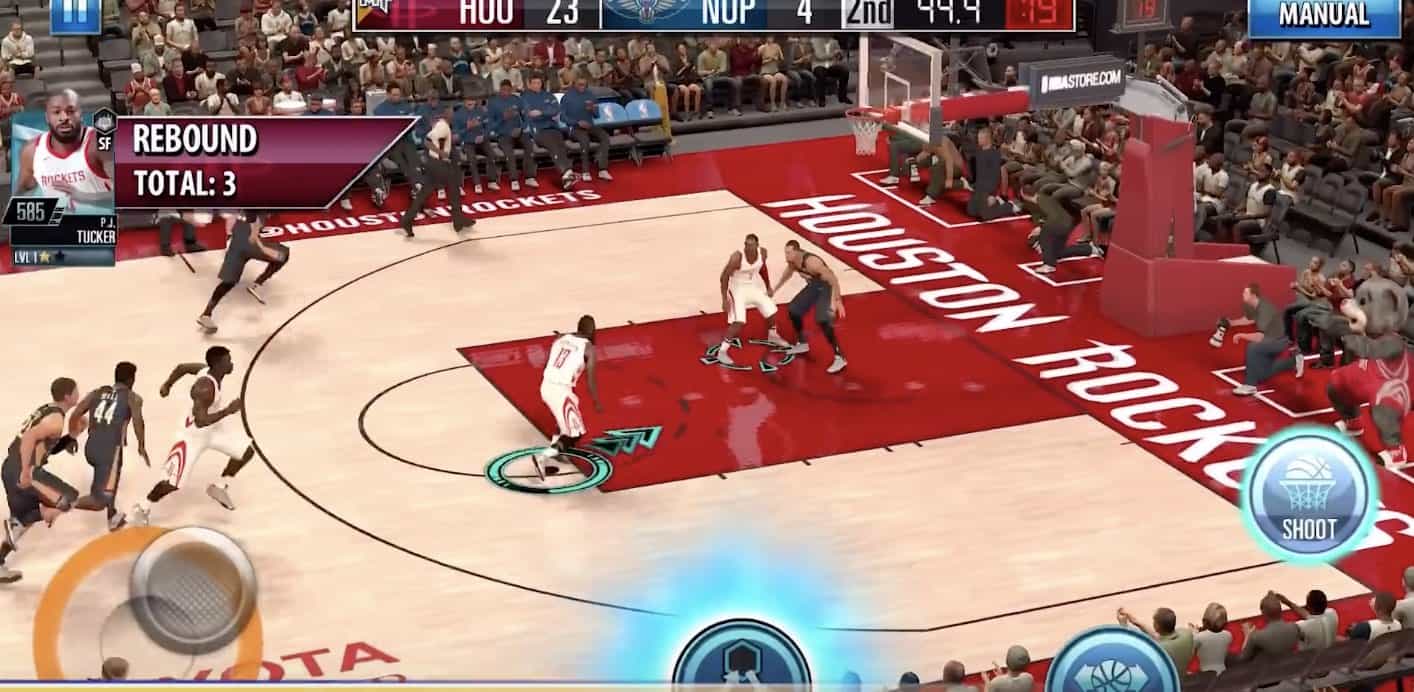
A regular NBA basketball game lasts for 48 minutes.
It further divides into 4 quarters of 12 minutes each. Still, games gain run times of up to 2 hours or more due to unpredictable circumstances. Some of these are breaks, free-throw clock stops, timeouts, and other play stoppages.
To shoot a basketball, a player must get their body square to the basket.
For the proper shooting stance, a player must maintain equal weight on each foot and bend the knees slightly. Then, the player must bring the ball into the so-called “lock and load” position, placing the ball onto the fingertips of the shooting hand similar to how a waiter holds a tray. However, shooting the ball with both hands is not advisable.
To shoot the ball, a player must snap the wrist in a downward waving motion.
Keeping the shooting elbow aligned with the body is important. This way, the arm has to go straight up and down, increasing the player’s accuracy.
The ball must roll off the fingertips upon release to produce backspin.
Usually, the middle finger is the last contact with the ball. Beginners must remember to shoot the ball with the fingers instead of the palms of the hand. It’s also better to practice at a close range in the beginning.
In learning how to spin a basketball, using an old basketball is highly recommended.
The more worn the ball is, the slicker it is. This way, it would have less grip or friction so it spins easier on the finger. Moreover, trimming the fingernails is a safety prerequisite for learning how to spin a basketball.
Learning how to spin the ball well first helps in trying to spin the ball on a finger.
The faster a ball spins, the better. Learning to spin the ball in the air helps players get a feel of the ball’s dynamic in their hands.
The two-handed spin and the one-handed spin are the two methods of basketball spinning.
First, the two-handed spin gives the player more control and power as it allows more speed on the initial spin. The one-handed spin, on the other hand, gives off a cooler look as it can make the ball easier to get onto the finger at times. However, a drawback to this method is that its harder to get a fast spin.
By 1913, the rules of basketball had at least 5 sets.
The list includes the YMCA–Amateur Athletic Union, collegiate, militia groups rules, and two varieties of professional rules. Often, teams would agree to play under a different set of rules for each half of a game.

The Amateur Athletic Union, the YMCA, and the colleges formed the Joint Rules Committee in 1915.
Mainly, the goal of the organization was to establish uniform measures. The group later got renamed into the National Basketball Committee (NBC) of the United States and Canada in 1936. Until 1979, the NBS served as basketball’s sole amateur rule-making body.
Also in 1979, the colleges left to form their own rules committee.
Eventually, the National Federation of State High School Associations took on the role of establishing separate playing rules for the high schools.
The NCAA Rules Committee for men consists of 12 board members representing all 3 NCAA divisions.
The team consists of six representatives from Division I schools while there are three members each from Divisions II and III. The NCAA holds jurisdiction over colleges, junior colleges, the National Association of Intercollegiate Athletics (NAIA), and Armed Forces basketball. Likewise, a similar body exists for women’s play.
Since 1894, there have been 5 players on a basketball team.
At least, that was the case for playing areas less than 1,800 sq ft (167.2 sq m). Seven players are the standard for gymnasiums spanning 1,800 to 3,600 sq ft (334.5 sq m), while nine players participate in games in even bigger areas.
Mutual consent set the standard of 5 basketball players per team in 1895.
Two years later, the rules demanded five players for each team. This number remained until today.
As slowdown tactics became rampant, the NBA established some rule changes.
For one, the midcourt line appeared in 1932. The offensive team must advance the ball past it within 10 seconds or they lose possession otherwise. In 1937, the rules changed to eliminate the center jump after each field goal or free throw. The defending team can inbound the ball from the out of bounds underneath the basket instead.
In 1985, the NCAA Rules Committee installed a 45-second shot clock.
The shot clock was a product of experimentation, and was reduced to 35 seconds only in 1993. Further, this clock restricted the time that a team can control the ball prior to shooting.
The implementation of the three-point shot rule occurred in 1986.
Each goal made beyond 19.75 ft (6.0 m) is equivalent to three points. By 2008, the three-point line moved to 20.75 ft (6.3 m) from the basket.
Basketball rules changed a lot to keep tall players from having unfair advantages.
In 1932, the ball-holder was prohibited from standing inside the foul line with his back to the basket for over 3 seconds. The three-second rule eventually applied to any attacking player in the foul lane.
Basket interference became prohibited in 1937-38.
Basket interference refers to touching the ball when it is in the basket or on the rim. Since 1944, goaltending became illegal as well, prohibiting defending players from touching the ball on its downward flight toward the basket.
Dribbling did not become a crucial part of basketball until the 1950s.
The dribbling rule came alongside the prominence of modern basketball in the same era. Before that, players who catch the ball would be allowed a few steps to slow down and stop. Only then can they throw the ball from that spot.

Was this page helpful?
Our commitment to delivering trustworthy and engaging content is at the heart of what we do. Each fact on our site is contributed by real users like you, bringing a wealth of diverse insights and information. To ensure the highest standards of accuracy and reliability, our dedicated editors meticulously review each submission. This process guarantees that the facts we share are not only fascinating but also credible. Trust in our commitment to quality and authenticity as you explore and learn with us.
